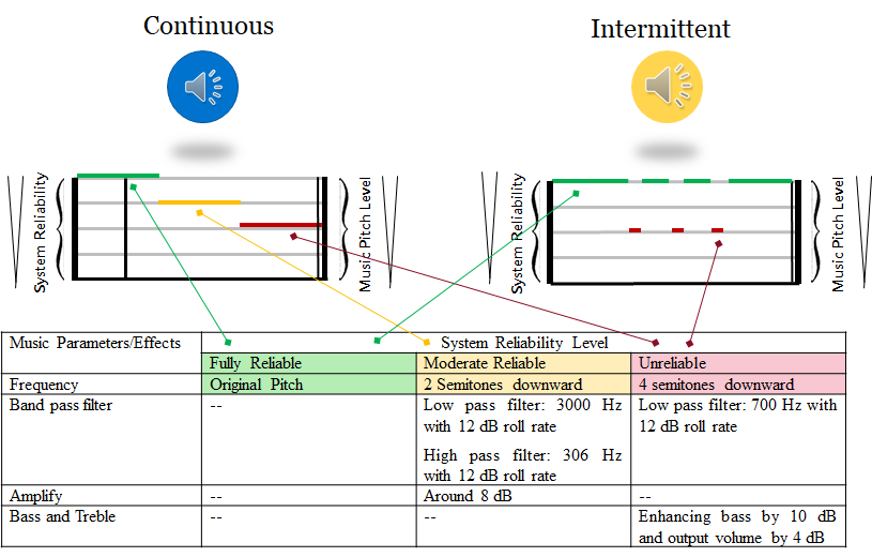A study of the effectiveness of blended sonification feedback for highly automated driving
Keywords: blended sonification, reliability, automated driving
With increasing vehicle automation, drivers are likely to engage more in non-driving related tasks. However, drivers may still be required to regain control of driving when automation limitations are reached in conditional automated driving (SAE level 3). One way to improve drivers’ situation awareness is to provide drivers with continuous feedback of system uncertainty/reliability.
Sonification is a process to transform data or information into the form of acoustic signal for the purposes of facilitating interpretation, and it has been widely used to support process monitoring. Blended sonification augments on the existing sound in the environment to convey information. In driving context, since music listening has been a popular in-vehicle activity, the aim of this study was to explore the feasibility of blending continuous sound feedback into drivers’ music listening experience and to improve driver takeover behavior in conditional automated driving.

A driving simulator study consisted of 36 participants was conducted. Participants were randomly assigned into three feedback groups, i.e. continuous, intermittent and no feedback group. Drivers’ gaze behavior as well as driving behavior data were collected.
Results of linear mixed effects model (analyzed using R package: lme4) showed that participants within continuous feedback group had significant faster manual response time than the no feedback group. Participants in no feedback group showed larger steering wheel correction comparing to the continuous group. No substantial difference was found in the NASA-TLX score among all three groups.
Publication: Link